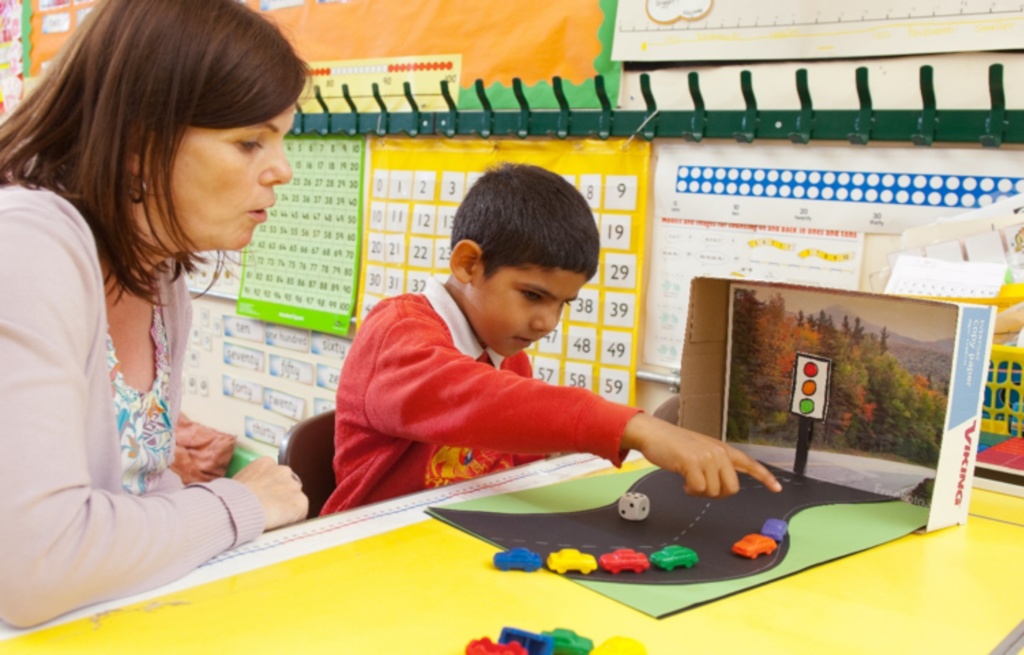
Numbers Count© is an intensive intervention for learners in Years 1 to 8 who have the greatest difficulties with mathematics. It is delivered by a specially trained teacher who also supports other staff in school. A major role of the teacher is to help children to learn how to become positive, active learners, seeking to make sense of their mathematical experiences and deploying a range of strategies to solve problems that are presented to them.
“Mansoor seemed to hate mathematics before he started Numbers Count. He would spend ages daydreaming or even distracting the other children, messing with the equipment or looking for a pencil … anything to avoid settling down to his work. I think he probably copied when my back was turned.”
This description of Mansoor by his class teacher paints a familiar picture. Even at six years old, many young children have already decided that mathematics is not for them. They may associate it with misunderstanding and bewilderment and the feelings of failure and anxiety, or even fear, that go along with them. They often use avoidance strategies like Mansoor’s as a way to steer clear of these feelings, but in the long run this only makes things worse because if they avoid even trying to learn mathematics they can only fall further behind their peers. So when Mansoor’s school chose him to take part in Numbers Count at the beginning of Year 2, he didn’t just need help to learn the mathematics that his peers had already learned: he also needed to rebuild his confidence and to learn how to learn mathematics.
Success in mathematics does not come from simply committing facts and procedures to memory, but from a growing understanding of how numbers work and of how they relate to each other, interact and make patterns or express structures. Constructing these understandings entails effort, risk, discussion and perseverance. It can also provide a huge sense of achievement, something struggling learners rarely experience. Each child will take their own journey in this learning and will require appropriate guidance and support to overcome the inevitable obstacles and difficulties that they will meet along the way. For most children, the pace of class lessons and the general guidance given by their class teacher, other adults and their peers will be sufficient to enable them to learn about mathematics and to construct their own helpful and accurate picture of the mathematical world. For some children, this pace or content will be inappropriate and they may lose confidence and become disheartened. Research (e.g. Burhans and Dweck, 1995) has shown that even very young children are not immune to feeling and acting as if they are helpless when they have experienced failure.
Some young children also believe that success in mathematics is measured in terms of the neatness and quantity of their written work and the number of ‘ticks on the page’ they have collected, rather than in terms of their understanding of the concepts involved. This could be why they feel they are rewarded for copying from their peers rather than by engaging with the learning themselves. Turner et al. (2002) noted that children may pick up the message that ‘demonstrating ability and outperforming others are the reasons for engaging in academic behaviour.’ Where this is the case, children may perceive that ‘asking for help, trying hard, and approaching their work in novel ways is a threat to their self-worth and thus purposefully avoid the use of strategies that might enhance their understanding and achievement.’ Focusing praise on getting answers ‘right’ – the outcomes of problem solving – rather than on the effort and processes that went on behind them, may lead to a fixed mindset (Dweck, 2012) and the learner feeling disempowered. However in classes where understanding and improvement are overtly prized and encouraged, children are much less likely to feel threatened and may not feel the need to avoid learning.

Making a good start
The majority of children in Numbers Count spend half an hour every day for at least twelve weeks learning in close contact with their teacher. This is a unique experience and opportunity for the child and needs to be set up carefully. Before Mansoor’s first lesson, his Numbers Count teacher found out as much as she could about him. She talked to colleagues in the school who taught or had taught him and she observed him in a variety of groupings in the classroom. She found out that he had an elder sister, Permaz, and that at home he spoke only Urdu to his mother. For his first lesson, she wanted to establish a warm, friendly relationship with him so that he would feel good about learning mathematics with her, while also making it clear that she expected him to try hard. She asked a teaching assistant whom he knew and liked to bring him to the Numbers Count room and to stay with him to help him to feel safe and to begin to trust her as his new teacher. She showed him all the resources in the room and let him handle them and talk about them. She explained that he would be coming to her for half an hour every day to learn mathematics and that he would have to do a lot of thinking. She asked him to write the numbers from 0 to 10, using any of the resources he saw in the room, and she put them on the wall to make a number line that would give him a sense of ownership and belonging right from the start.
